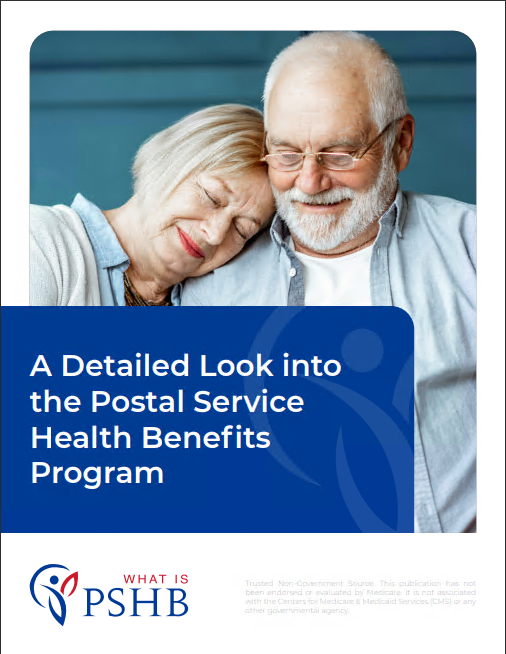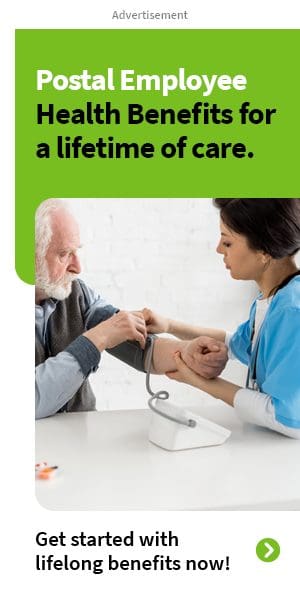Key Takeaways
-
The shift from FEHB to PSHB introduces tailored benefits specifically for Postal Service employees and annuitants, aiming to enhance health coverage options.
-
Understanding the differences between FEHB and PSHB ensures you make informed decisions during enrollment and beyond.
The Shift to PSHB: What You Need to Know
The Postal Service Health Benefits (PSHB) program has officially replaced the Federal Employees Health Benefits (FEHB) program for Postal Service employees and annuitants. This transition is a significant change in how healthcare is provided, with a primary focus on addressing the unique needs of the postal workforce. If you’re navigating this change, it’s essential to understand the benefits, key differences, and steps to ensure seamless coverage.
Why the Change from FEHB to PSHB?
The transition to PSHB was designed to streamline healthcare for Postal Service employees and retirees. By creating a program exclusively for the Postal Service, the government aims to:
-
Reduce healthcare costs for employees, annuitants, and the Postal Service itself.
-
Offer tailored coverage options that align more closely with the needs of postal workers and their families.
-
Simplify Medicare integration for eligible retirees.
This change also helps the Postal Service address its financial challenges by creating a healthcare system that’s both efficient and cost-effective.
Key Dates to Keep in Mind
The PSHB program officially took effect on January 1, 2025. If you were previously enrolled in FEHB, here’s what you need to know:
-
Open Season: The last Open Season for FEHB and the first for PSHB ran from November 11 to December 13, 2024.
-
Effective Coverage Date: Changes made during the Open Season began on January 1, 2025.
-
Ongoing Enrollment: Outside of Open Season, changes to your coverage can only be made due to Qualifying Life Events (QLEs).
Mark your calendar for future Open Seasons to review and adjust your coverage as needed.
How Does PSHB Compare to FEHB?
PSHB builds on the foundation of FEHB but introduces several unique features designed to benefit Postal Service employees and retirees. Let’s break down the key differences.
Coverage Options and Costs
PSHB offers a range of plan types, including self-only, self-plus-one, and self-and-family coverage. While similar to FEHB, PSHB plans often provide additional cost-sharing benefits for Medicare-eligible annuitants. These include:
-
Waived or reduced deductibles.
-
Lower copayments and coinsurance rates.
-
Enhanced prescription drug benefits through Medicare Part D Employer Group Waiver Plans (EGWPs).
However, costs for premiums, deductibles, and out-of-pocket maximums vary depending on the plan you choose. It’s essential to review plan brochures to compare costs and benefits thoroughly.
Medicare Integration
One of the most significant changes with PSHB is its streamlined integration with Medicare. If you’re Medicare-eligible, you’re required to enroll in Medicare Part B to maintain PSHB coverage unless you meet specific exemption criteria. For those who are already enrolled in Medicare, PSHB plans often:
-
Coordinate benefits to minimize out-of-pocket costs.
-
Offer Part B premium reimbursements in some cases.
-
Provide automatic enrollment in a Medicare Part D EGWP for prescription drugs.
This integration helps reduce overall healthcare costs and ensures comprehensive coverage.
Tailored Benefits for Postal Workers
PSHB plans are uniquely designed to address the specific needs of Postal Service employees and retirees. For instance:
-
Enhanced Preventive Care: Many PSHB plans offer expanded preventive care services at little or no additional cost.
-
Geographic Flexibility: Coverage options are available nationwide, making it easier for postal workers in rural or remote areas to access healthcare.
-
Simplified Plan Structures: Plans are structured to align with the needs of the postal workforce, offering clarity and ease of use.
Financial Impact on Employees and Annuitants
The government continues to contribute approximately 70% of premium costs under PSHB, similar to FEHB. However, your out-of-pocket expenses will depend on the plan you choose and your healthcare needs. Reviewing and understanding your plan’s cost-sharing structure is vital to avoid unexpected expenses.
Enrollment Tips for Postal Service Employees and Retirees
Whether you’re enrolling for the first time or transitioning from FEHB, here are some tips to ensure a smooth experience:
-
Review Plan Options Thoroughly: Take the time to read plan brochures and compare benefits, premiums, deductibles, and out-of-pocket maximums.
-
Consider Your Healthcare Needs: Evaluate your current and anticipated healthcare needs to select a plan that provides adequate coverage.
-
Understand Medicare Requirements: If you’re Medicare-eligible, ensure you’re enrolled in Part B to maintain PSHB coverage. Check for any premium reimbursements or additional benefits offered by your chosen plan.
-
Keep an Eye on Deadlines: Mark Open Season dates on your calendar to review and adjust your coverage annually.
-
Ask Questions: If you’re unsure about your options, contact your human resources department or the Office of Personnel Management (OPM) for guidance.
Common Questions About the Transition
The move to PSHB has raised several questions among Postal Service employees and retirees. Here are some of the most frequently asked:
Will I Lose Coverage if I Don’t Enroll in Medicare Part B?
Yes, if you’re Medicare-eligible and choose not to enroll in Part B, you may lose your PSHB coverage unless you qualify for an exemption. Be sure to review the requirements carefully.
What Happens if I’m Covered Under a Family Member’s FEHB Plan?
You can continue your FEHB coverage if you’re covered under a family member’s plan. However, you’ll need to ensure that this coverage meets your healthcare needs.
How Do Prescription Drug Benefits Work Under PSHB?
If you’re Medicare-eligible, your prescription drug coverage will automatically be provided through a Medicare Part D EGWP. This ensures you receive comprehensive drug coverage with reduced out-of-pocket costs.
Can I Change My Plan Outside of Open Season?
Changes outside of Open Season are only allowed if you experience a Qualifying Life Event (QLE), such as marriage, divorce, or the birth of a child. Make sure to report QLEs promptly to avoid gaps in coverage.
Making the Most of Your PSHB Coverage
To maximize your benefits under PSHB, it’s important to stay informed and proactive. Here’s how:
-
Utilize Preventive Services: Take advantage of free or low-cost preventive care services included in your plan.
-
Coordinate Care with Medicare: If you’re Medicare-eligible, ensure your healthcare providers coordinate your care to reduce out-of-pocket costs.
-
Monitor Your Expenses: Keep track of your healthcare spending to identify any areas where you can save.
-
Stay Updated: Regularly review plan information and updates to ensure your coverage meets your needs.
Your Path to Comprehensive Health Coverage
The transition from FEHB to PSHB marks a new era in healthcare for Postal Service employees and retirees. By understanding the differences, reviewing your options, and staying proactive, you can ensure that your health coverage aligns with your needs and provides the protection you deserve. Take the time to explore your options, ask questions, and make informed decisions to secure your healthcare future.










